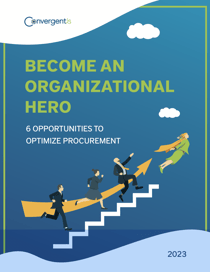Direct procurement processes are critical to the development of well-crafted products and supply chain resilience. As such, the process often involves a more complicated and expansive supply chain than indirect procurement. Without proper precision, strategy and collaboration, businesses will struggle with customer retention and loyalty when key business offerings are not delivered on time to meet customer demand.
For most companies, indirect procurement automation is not the most effective approach for managing their direct spend. A targeted direct procurement solution can provide businesses with:
-
A more holistic approach to the supply chain
-
Effective handling of complex and lengthy order lifecycles
-
Strategic and collaborative procurement
What is Direct Procurement in SAP?
Direct procurement also known as vendor management involves the acquisition of goods and materials to manufacture products related to the business’s core competency. As a result, these goods are generally bought in large quantities and require careful coordination with a supplier. In SAP, the process of procuring materials is known as the direct material procurement process.
Under this system, users can order large quantities of multiple components using a Bill of Materials (BOM) and schedule the committed delivery of those components over a period of many months using a forecasting application. For other steps in the process such as sourcing, contracts, invoicing, and finalizing purchase orders, other corresponding applications are also available.
The Role of SAP in Direct Procurement
SAP's direct procurement module is designed to facilitate the end-to-end procurement process, specifically for direct materials or goods that are used in the production of finished products. It provides a central platform for managing the entire procurement lifecycle, from supplier selection to invoice processing. By integrating various procurement activities, SAP enables organizations to achieve greater control, visibility, and efficiency in their direct procurement operations.
However, where many experts agree where SAP stands out for its competitors is through its additional features and functionalities, such as contract management, price determination, and integration with supplier collaboration platforms. By leveraging these capabilities, organizations can streamline their direct procurement processes, enhance supplier relationships, and drive cost savings.
7 Common Direct Procurement Use Cases
There are several common use cases for direct procurement, primarily related to contract manufacturing, forecasting, inventory management, and product sourcing:
1. Contract and Multi-Tier Manufacturing Collaboration
Buyer purchases a large number of items at a bulk price point from a supplier, with the delivery of goods scheduled to take place via regular shipments over a specific period of time. In a multi-tier scenario, a hierarchy of subcontractors or out-source manufacturers are in place between the buyer and the supplier to assemble the final product.
2. Integrated Forecast Collaboration
Buyers track and measure savings for sourcing projects, more effectively schedule operations and capacity planning, and map supplier commitments. Suppliers gain near-real-time visibility into demand and more easily provide commitment against buyer-requested quantities.
3. Product Sourcing
Buyers obtain quote pricing for materials on their BOM to run sourcing events such as a Request for Proposal (RFP) or auction.
4. Spot Quote
Buyers respond to the unplanned and immediate needs for items that are not covered by contracts and strategic sourcing, and so must publish a Request for Quote (RFQ) and receive bids from suppliers, often at a higher price point.
5. Supplier Managed Inventory (SMI)
Suppliers manage stock inventory at the buyer’s location and send products based on scheduled agreements, gross demand, and current inventory levels.
6. Consignment Collaboration
This is similar to the SMI use case. However, the ownership of the goods does not transfer to the buyer when the goods are received. Instead, the stock continues to be both owned and controlled by the supplier. Only upon an external event, such as a sale to an end customer, will the stock’s ownership transfer to the buyer.
7. Customer Service Requests & Returns Management
Buyers gain visibility into customer escalations for faulty products, authorize returns, and provide information back to suppliers of faulty components.
Optimizing Direct Procurement is a Journey, Not a One Time Event
As seen by the use cases above, the nature of direct procurement is complex due to the number of players, technical nature of components, and the logistics of ensuring that the right amount of stock is available at the right place at the right time throughout a globally distributed supply chain. Direct procurement is often one of the first optimized by large enterprises; however, it might be worthwhile to see if your organization is already following these best practices.
1. Can Your Procurement Team Easily Collaborate with Suppliers for More Accurate Long-Term and Short-Term Forecasts?
The best-laid plans and forecasts can go awry and, especially in today's world with its multiple political, health, and business upheavals. Through a collaborative, direct procurement approach with suppliers, however, your business will have the agility that it needs to weather these storms. Providing vendors with transparency and insight into future order schedules helps to build strong supplier relationships. Cost optimization, quality, continuity of supply, and consistent delivery are all reliant on the supplier. The stronger your relationship is with these parties, the more likely they will continue prioritizing your business.
2. Does Your Procurement Team Have Visibility into the End-to-End Procurement Process?
For collaboration within the supply chain, all parties must have shared visibility into the forecasting process, including target levels and shipment times. Without awareness from both parties, supply chain relationships will suffer.
3. Are Your Transactions Integrated with the Flow of Money?
The proper allocation of capital is essential to maintain the flow of the supply chain. Through the use of digital and networked direct procurement processes, buyers can:
-
Maximize just-in-time processes and reduce carrying costs associated with large inventories
-
Reduce safety stock through greater visibility and forecasting
-
Reduce the costs of Spot Quotes through greater supply chain agility
The resulting increase in cash flow can be re-invested in solutions that help your business increase revenue or return funds to shareholders.
4. Does Your Team Have the Ability to Automatically Allocate Inbound Materials?
As buyers progress toward just-in-time manufacturing systems at multiple locations, they should have the ability to match incoming supply and factory-specific demand on an ongoing basis. This ensures your team never faces a shortage while also facing minimal overhead.
5. Is Your Team Taking Full Advantage of The Global Supply Chain?
While oftentimes more cost-effective, relying on a supply chain that is restricted to a single vendor or a single region can prove risky in case of a natural disaster or other unforeseen occurrences. As a result, successful teams have used globalization to diversify their supplier base and open their choices for sourcing. Unfortunately, a more extensive supply chain also makes for a more complicated network design and higher risks. All enterprises must strike a balance between maintaining close supplier connections while at the same time diversifying their supplier base.
6. Is Your Team Still Operating in Siloes?
One of the major challenges that still occurs indirect procurement processes is internal siloes, which can act as a bottleneck for information. Bottlenecks make simple sourcing events a complex transaction between data in ERP systems, supply chain management systems and transportation management systems. Each transaction involves several moving parts. The easier the integration between these parts, the more smoothly the entire process will run.
7. Have You Considered All the Steps in the Procurement Process That Can be Standardized, Such as Contracts?
Standardization is key to streamlining any department, procurement included. But sometimes, more complex documents might be overlooked; one of these documents is the contract. Contract management software can help businesses through template creation, which will hold standard information for procurement specialists to follow, such as evaluating criteria or certain milestones. While one contract might not fit all, a few templates may cover most scenarios and help to streamline a lengthy process. The right tools can also help to centralize contract storage and strengthen compliance by only allowing contracts that follow company guidelines to be submitted for approval.
8. Is Your Team Taking Advantage of Cohesive Procurement Solutions?
The bottom line is that your business needs complete visibility over the entire life cycle of a direct procurement transaction, including the cash flow and progress against KPIs. SAP has combined sourcing, logistics and other related processes into a single environment that can be coupled with additional partner applications from ConvergentIS that seamlessly integrate with the core SAP ERP system. Therefore, all departments that require information throughout the procurement process can easily access what they need from one centralized location. By streamlining these processes, businesses can realize significant cost savings.
To learn more about direct procurement solutions from ConvergentIS and SAP, visit the Direct Spend webpage.
For insights into optimizing other areas of procurement spend, check out our white paper Become an Organizational Hero: 6 Procurement Optimization Opportunities.


